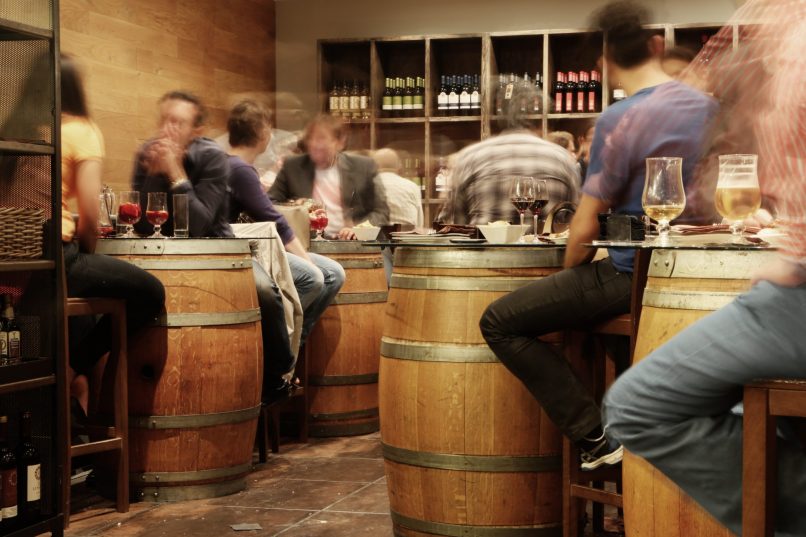
What are Spanish Tapas? Everything You Need To Know
What Are Tapas?
In Spain, people traditionally enjoy tapas as small plates of food served in bars and restaurants. These dishes can be hot or cold, ranging from simple snacks to more elaborate recipes. Some common examples of Spanish tapas include olives, croquetas, or tortilla española.
The word “tapas” comes from the Spanish verb tapar, which means “to cover.” In the past, people would place a small plate of food over their drink to keep flies away. Over time, Spaniards turned this custom into a culinary tradition.
The Origins of Spanish Tapas
Spaniards have embraced tapas as part of their culture for centuries. One story says that King Alfonso X of Castile ordered food to be served with wine to help prevent drunkenness. Others say that bartenders used bread or ham to cover drinks between sips. No matter the origin, the tradition caught on across Spain.
Today, tapas are more than just food. They represent a way of life. People gather to eat, drink, and socialize. In fact, tapas are enjoyed with family, friends, and even strangers. They are a big part of Spanish nightlife and weekend culture.
Why Tapas Are Special
Spanish tapas are a fun and casual way to try many dishes in one meal. They are perfect for sharing and exploring local flavours. Since each region has its own specialties, eating tapas becomes a journey through Spain’s diverse cuisine.
In cities like Barcelona, Seville, or Madrid, you can go on a tapeo – a tapas crawl. This means visiting several bars, ordering one or two tapas and a drink at each place. It’s a social and tasty experience.
Popular and Well-Known Tapas
Spain has hundreds of tapas dishes. Here are some of the most famous ones:
Patatas Bravas
Patatas bravas are crispy fried potatoes. They are topped with a spicy tomato sauce, sometimes with a drizzle of aioli. The sauce usually includes garlic, paprika, and chili. This dish is spicy, crunchy, and full of flavour.
Croquetas
Croquetas are bite-sized fried snacks. They are made from a creamy béchamel sauce and mixed with ingredients like jamón (ham), chicken, mushrooms, or cod. Croquetas stay crunchy outside while remaining soft and creamy inside. You’ll find them in nearly every tapas bar.
Gambas al Ajillo
Gambas al ajillo means “garlic shrimp.” This dish includes prawns sautéed in olive oil with garlic, parsley, and sometimes chili or white wine. Bars usually serve it sizzling hot in a clay dish. It’s simple but packed with flavour.
Tortilla Española
Also called tortilla de patatas, this dish is a thick Spanish omelette made with eggs, potatoes, and – sometimes – onions. Many bars serve it cold or at room temperature. It can be cut into slices and served as a tapa or eaten as a meal. It’s a must-try.
Other Popular Tapas Dishes
Spain’s tapas scene goes far beyond the classics. Here are more popular dishes you’ll find across the country:
Calamares Fritos
Calamares fritos are fried squid rings. They are usually coated in flour and lightly fried until golden. Served with lemon wedges and sometimes alioli, they’re crispy, tender, and great with a cold beer.
Aceitunas (Olives)
Olives are a classic tapa. In Spain, you’ll find many types—green, black, stuffed with anchovies or garlic. Some are marinated in herbs, spices, or orange zest. They’re usually served free with your first drink.
Boquerones en Vinagre
Boquerones are anchovies marinated in vinegar, garlic, and parsley. They are served cold and are very popular in Madrid and the south of Spain. They offer a tangy, fresh flavour.
Mejillones al Vapor
These are steamed mussels served in their shells. They may be flavoured with lemon, white wine, garlic, or bay leaf. You’ll often find this light and healthy tapa in coastal areas, especially near the sea.
Chorizo al Vino
This dish features spicy Spanish chorizo sausage cooked in red wine. It’s rich, savoury, and often served hot in small clay dishes. It’s a hearty option that pairs well with red wine.
Pimientos de Padrón
Pimientos de Padrón are small green peppers fried in olive oil and sprinkled with sea salt. Most peppers taste mild, though occasionally one surprises you with a spicy kick. It’s part of the fun!
Empanadas
Empanadas are pastry pockets filled with meat, fish, vegetables, or cheese. They are baked or fried and are great for sharing. They’re especially popular in northern Spain and Galicia.
Ensaladilla Rusa
This is a cold potato salad made with mayonnaise, peas, carrots, tuna, and sometimes olives or boiled eggs. It’s creamy and filling—a comfort food for many Spaniards.
These dishes are just a starting point. Each region puts its own twist on tapas, offering something unique wherever you go. In the Basque Country, for example, tapas are called pintxos and often come on a slice of bread with a toothpick.
How to Order Tapas
The Tapas Bar Experience
In most traditional tapas bars, you order at the bar rather than at a table. The food is usually displayed behind glass, making it easy to point and choose. Locals often start with a drink, order a tapa, then keep ordering as they go.
In some cities like Granada or parts of Madrid, you’ll even get free tapas with your drink. In Barcelona and other cities, you usually pay for each tapa.
Tips for Ordering Spanish Tapas
Start with one or two dishes and order more as you go.
Don’t order everything at once. It’s normal to order slowly and share.
Ask the staff for recommendations. They know what’s fresh.
Try both cold and hot dishes for variety.
Be ready to stand. Many bars don’t have much seating.
Useful Spanish Phrases
Una cerveza, por favor – A beer, please.
¿Qué me recomienda? – What do you recommend?
Quiero probar las croquetas – I’d like to try the croquettes.
¿Cuánto cuesta? – How much is it?
La cuenta, por favor – The bill, please.
By learning a few basic phrases, you’ll feel more confident and receive better service.
Best Places to Eat Tapas in Barcelona
Without a doubt, Barcelona is a top destination for tapas lovers. You’ll find both traditional and modern takes on classic dishes. You’ll find traditional and modern takes on classic dishes. Some of the best areas to explore include:
Barri Gòtic
This old part of the city has many small bars with great character. It’s a great place to try rustic tapas and enjoy the charm of narrow streets and lively plazas.
El Raval
This multicultural neighbourhood offers a mix of traditional Spanish tapas and modern fusion. You’ll find hidden gems with a creative twist on the classics.
Poble Sec
Poble Sec is known for its tapas bars along Carrer de Blai. Here you’ll find pintxos, which are small bites served on bread with a stick. Most cost just a few euros.
Gràcia
This local neighbourhood has a relaxed vibe and some of the best tapas bars away from the tourist crowds. It’s ideal for a casual evening out.
Conclusion
Spanish tapas are much more than food. They are a way to experience Spanish life. Whether you try patatas bravas, croquetas, or a plate of anchovies, every tapa shares a story through its flavours and traditions. Sharing small plates brings people together and reflects Spain’s social spirit.
If you are visiting Barcelona, be sure to explore the local tapas bars. Try new dishes, ask for recommendations, and enjoy the experience. Don’t be afraid to step into a busy bar and squeeze in at the counter. That’s often where you’ll find the best food.
Looking for a place to stay during your trip?
Browse our collection of luxury villas just outside Barcelona to make your visit unforgettable. Enjoy a comfortable stay while exploring the best tapas the city has to offer.



